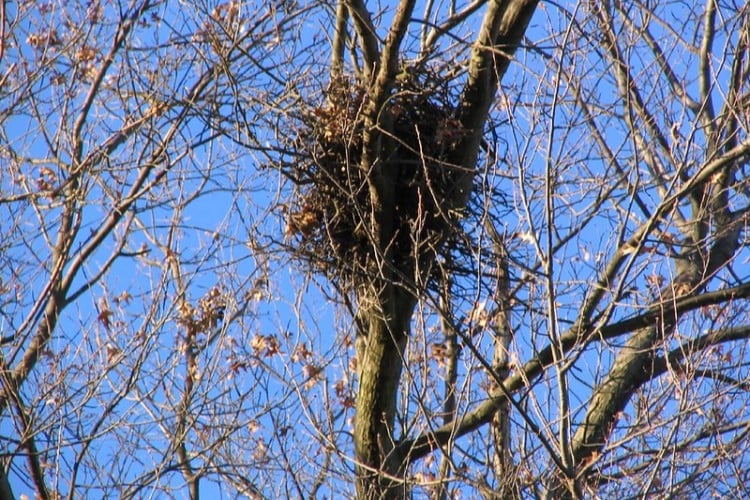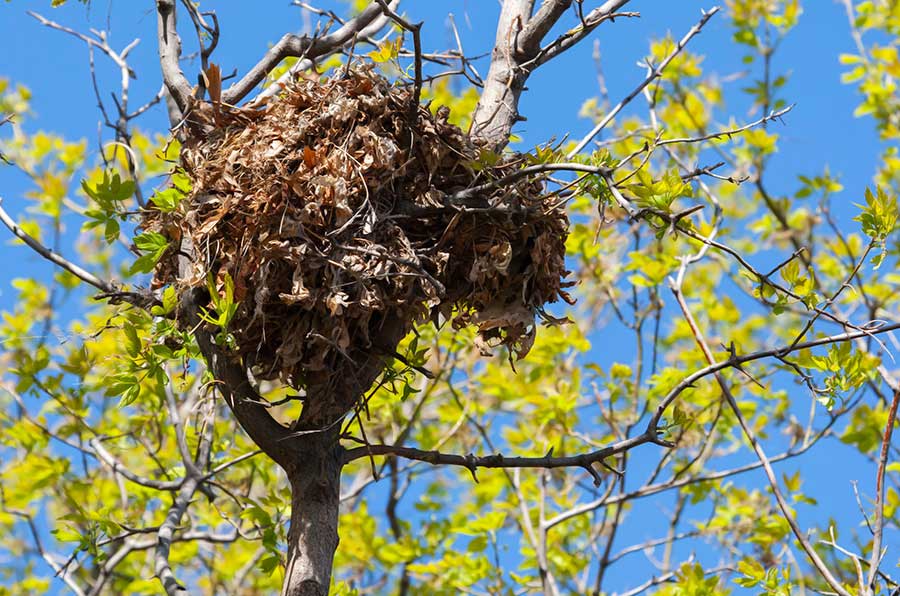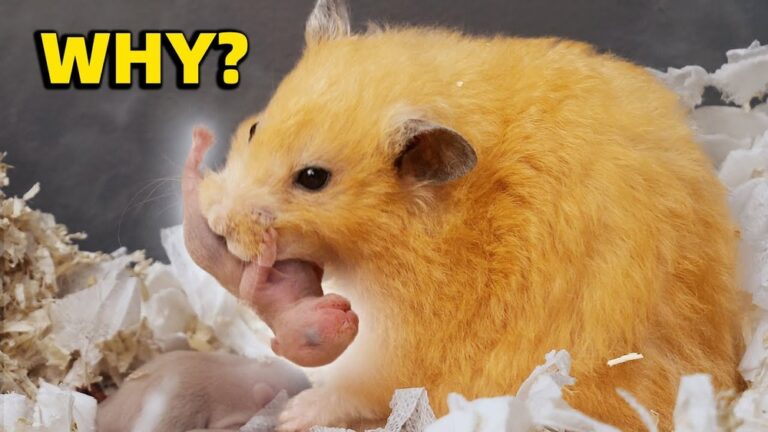Do Squirrels Build Nest: Surprising Facts You Need to Know
Have you ever spotted a squirrel darting through the trees and wondered where it calls home? You might be surprised to learn that squirrels are not just playful creatures—they are expert builders too.
But do squirrels actually build nests? If you’ve been curious about how these busy little animals create their safe spaces, you’re in the right place. Keep reading to discover fascinating facts about squirrel nests and why understanding their homes can change the way you see these common backyard visitors.
Squirrel Nest Types
Squirrels build nests to live, rest, and raise their young. These nests offer safety from weather and predators. Different types of nests suit different squirrel species and environments. Understanding these nests helps us learn more about squirrel habits.
Dreys: The Leafy Homes
Dreys are the most common squirrel nests. They are made from twigs, leaves, and moss. Squirrels weave these materials tightly to form a round shape. Dreys usually sit high in tree branches. They have a small entrance hole for easy access. These nests protect squirrels from rain and cold. Dreys can be used for short or long periods.
Tree Cavities And Other Shelters
Some squirrels prefer tree cavities. These are holes inside tree trunks. Squirrels find or enlarge these spaces for shelter. Tree cavities provide strong protection from predators. They also stay warmer in winter. Apart from cavities, squirrels may use birdhouses or hollow logs. These shelters offer safe places to hide and sleep. Squirrels choose spots that keep them safe and dry.
Nest Building Materials
Squirrels use different materials to build their nests. These materials help make a safe and warm home. Each material has a special role in the nest’s structure and comfort. Understanding these materials shows how clever squirrels are at surviving.
Twigs And Leaves
Squirrels collect twigs to form the nest’s frame. These twigs create a strong base and keep the nest stable. Leaves cover the twigs, adding extra protection. They help block wind and rain. This mix of twigs and leaves makes the nest sturdy and safe.
Soft Linings For Comfort
Inside the nest, squirrels add soft materials. These can be moss, grass, or shredded bark. Soft linings keep the nest warm and cozy. They protect baby squirrels from cold weather. This comfort is important for the squirrel family’s health and safety.
Nest Construction Process
Squirrels are skilled builders. Their nest construction process shows their intelligence and survival skills. Each step ensures the nest is safe, warm, and strong. Understanding this process helps us appreciate these small creatures more.
Choosing The Location
Squirrels pick a spot with care. They look for places high off the ground. Tree branches or forks are common choices. The spot must protect them from rain and predators. Safety and shelter are key factors in their choice.
Gathering Materials
Squirrels collect twigs, leaves, and moss. They use soft materials like grass or fur for lining. These materials add warmth and comfort. The gathering can take time but is very important. The right materials make the nest cozy.
Building The Structure
The structure starts with a frame of twigs. Squirrels weave materials tightly together. They build walls and a roof to block wind. Inside, they place soft lining for warmth. The nest becomes a secure home for them.

Credit: www.massaudubon.org
Purpose Of Squirrel Nests
Squirrel nests serve important roles beyond just a place to rest. These nests are carefully built to meet the squirrels’ basic needs. They offer safety, comfort, and a place to raise young ones. Each nest is a small home designed to protect and support squirrels in their daily life.
Protection From Weather
Squirrel nests keep squirrels safe from rain, wind, and cold. The nests are made with leaves, twigs, and soft materials. These materials help keep the inside warm and dry. A well-built nest shields squirrels during storms and cold nights. It acts like a natural shelter against harsh weather.
Raising Offspring
Squirrels use nests to raise their babies. The nest offers a quiet and safe spot for young squirrels. Mothers build cozy nests to keep their babies warm and secure. The nest protects the young from predators and bad weather. It is a nurturing space for the new generation to grow strong.
Storage And Resting
Squirrels also use nests to store food. They hide nuts and seeds inside the nest for later use. The nest provides a safe place to rest after foraging. Squirrels return to their nests to eat and sleep. It is their retreat from danger and a place to regain energy.
Seasonal Nesting Habits
Squirrels adapt their nests to fit the seasons. Their homes change with the weather. These changes help them stay safe and comfortable year-round. Understanding their seasonal habits shows their cleverness and survival skills.
Winter Warmth Strategies
In winter, squirrels build thick, cozy nests called dreys. They use leaves, twigs, and moss to keep warm. These materials block cold wind and trap heat inside. Squirrels often add extra insulation during the cold months. They may also choose tree cavities for better protection. Staying warm helps them save energy in harsh weather.
Summer Shelter Changes
In summer, squirrels adjust their nests to stay cool. They use lighter materials like dry leaves and grass. The nests become less dense to allow airflow. Squirrels may build nests in shaded areas to avoid heat. These changes help prevent overheating during hot days. Summer shelters focus on comfort and ventilation.

Credit: aaacwildliferemoval.com
Interesting Nesting Behaviors
Squirrels show unique habits when building nests. Their behavior helps them survive and stay safe. Each squirrel has its own way of using nests. These habits reveal how smart and adaptable squirrels are.
Learning about their nesting habits gives us a closer look at their daily lives. These animals do more than just build one nest. Their choices about nests tell us a lot about their needs and environment.
Multiple Nests Use
Squirrels often build several nests at once. They use different nests for different purposes. Some nests are for sleeping, others for storing food. This helps them stay prepared for changes in weather.
Using many nests also keeps squirrels safe. If one nest is disturbed, they can move to another quickly. This habit increases their chances of survival in the wild.
Nest Sharing And Territory
Squirrels usually keep their nests private. They defend their nests from other squirrels. Sharing nests is rare and happens mostly during breeding season. Mothers may share nests with their babies for warmth and protection.
Each squirrel marks its territory around its nests. This marking warns other squirrels to keep away. Territorial behavior helps reduce fights and keeps the area secure.
Human Impact On Nesting
Humans have a big effect on how squirrels build their nests. Changes in the environment caused by people affect where and how squirrels live. These impacts can make it harder for squirrels to find safe places to make nests. Understanding these effects helps us protect squirrels better.
Urban Environments
City areas change natural habitats into buildings and roads. Trees are cut down, reducing places for squirrels to build nests. Noise and pollution disturb squirrels and make nesting difficult. Some squirrels adapt by nesting in attics or parks. Still, urban life is risky for many squirrels.
Conservation Efforts
People work to save trees and natural spaces for squirrels. Planting more trees helps create safe nesting spots. Some groups build nest boxes to replace lost homes. Protecting green areas supports squirrel populations. Simple actions can make a big difference for squirrels.

Credit: www.perkypet.com
How Smart Pets Lover Can Help You with Do Squirrels Build Nest
Exploring Squirrel Nesting: A Hands-On Learning Journey
Understanding how squirrels build nests offers more than just fascinating wildlife insights—it opens doors to practical learning about nature’s engineering marvels. By observing the nest building materials squirrels choose, such as leaves, twigs, and moss, we can appreciate their resourcefulness and adaptability. Noticing the nest construction process reveals how these small creatures carefully weave shelter that serves crucial purposes like protection and raising their young.
For pet lovers and nature enthusiasts alike, this knowledge encourages a deeper connection with the environment. It’s a reminder of the delicate balance squirrels maintain, especially as human activity impacts their nesting habits. At Smart Pets Lover, we believe nurturing this understanding helps pet parents and animal lovers become more mindful caretakers of all creatures, big and small.
- Try observing local squirrels to see different nest types firsthand.
- Reflect on how seasonal changes influence their nesting behavior.
- Consider how your backyard environment might support or hinder wildlife.
If you’re curious or want to learn more about small animal behaviors, feel free to reach out to us at [email protected]. Every encounter with nature enriches our story—where every wag, purr, and chirp truly tells a story.
Frequently Asked Questions
Do Squirrels Build Nests For Shelter?
Yes, squirrels build nests called dreys. Dreys are made from twigs, leaves, and moss. They provide shelter from weather and predators.
Where Do Squirrels Usually Build Their Nests?
Squirrels build nests high in tree branches. They prefer dense foliage for protection. Sometimes, they use tree cavities or abandoned nests.
What Materials Do Squirrels Use For Nest Building?
Squirrels use twigs, leaves, grass, and moss. They weave these materials tightly for insulation. The nest is soft inside for comfort.
How Often Do Squirrels Build New Nests?
Squirrels build new nests seasonally, especially before winter. They may repair or abandon old nests. Nest building helps maintain warmth and safety.
Conclusion
Squirrels build nests to stay safe and warm. They use leaves, twigs, and soft materials. These nests help protect them from weather and predators. Watching how squirrels build can be fascinating. Their homes show how clever and resourceful they are.
Knowing about squirrel nests helps us appreciate nature more. Next time you see a squirrel, think about its cozy home. Nature has many small wonders like this one. Squirrel nests are simple but very important for their survival.





